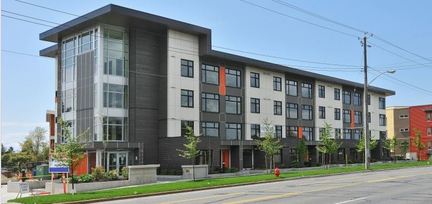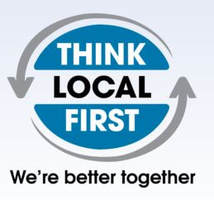 greatervichousing.org greatervichousing.org By Catherine Holt, CEO, Greater Victoria Chamber of Commerce I read in the Times Colonist that home assessments in our region will be up five to 10 per cent this year. That’s good news because it’s lower than previous, more shocking, increases. The median house price in the region in 2015 was $550,000. In 2018, it’s about $780,000 — a 42 per cent increase. The median condo in 2015 was $270,000. In 2018, it’s $410,000 — a 52 per cent increase. The median after-tax household income in 2015 (last census) was about $61,000. Wages have been going up at about the rate of inflation, around two per cent, so that would mean median household income in 2018 is about $66,000. What those numbers say about our housing market is that the people earning the average income are no longer the people buying the average home. The employers I talk to at The Chamber are challenged to find staff. It appears to be the single largest constraint on economic growth in our region. A major obstacle is the price of housing, which is why The Chamber advocates for affordable and available workforce housing. This is a separate issue from “homelessness.” Homelessness is shorthand for the difficult set of issues that surround mental illness and addictions and the resulting inability to earn a living and find a home. It’s a very important social issue in our region, aggravated by the high cost and scarcity of housing, but it‘s not the same issue as affordable housing for the working population. Having to reduce business hours, say no to a contract or put aside the idea of opening another location because potential employees can’t find suitable housing in Victoria is an economic issue. Until the last decade, our region had housing prices that matched the ability of a two-income family to pay a 25-year mortgage using 25 to 30 per cent of their income. That is the long- standing Canadian model, and it is still the model for most of the country — housing is built and priced for the people who live and work in a community. But our real estate market has become increasingly detached from our labour market. It’s becoming more of a national and international commodity than a local one. Given the size of the international demand for land in a safe haven, that is unlikely to change in the foreseeable future. Governments can try to moderate real estate prices through measures like the province’s speculation tax, foreign-buyers’ tax or the long-standing property transfer tax. Those measures likely helped moderate the increase in assessed values this year, but they won’t bring the cost of real estate down to match local incomes. Many in the real estate industry say we’re lacking supply. That suggests if you build more homes, prices will go down. Maybe. But so far there seems to be lots of building going on yet the prices are only going up. To use an extreme example, multi-million dollar condos do increase our housing supply but still leave local workers out in the cold. Land is expensive, building is expensive, neither of which is likely to change, but at the end of the day we need a supply of workforce housing that is not subject to the vagaries of the real estate market. This is where the concept of non-market housing comes in. We have it now in many forms. Student housing is non-market housing. The university builds housing and rents it at the appropriate price to ensure students can afford to attend the university. Some residences for people on fixed income charge a percentage of income, or a stable, affordable amount, rather than the market rate. However, the new reality is much more of the working population can’t afford market rates. If you’re a working family with an income of up to $104,000 you can now qualify for government-funded housing offered by not-for-profit housing organizations. That used to be more than enough income to ensure a family could buy a house listed through a real estate agent on MLS. Non-market housing isn’t a free ride. In many models renters pay about 30 per cent of their gross monthly household income. What it does provide is reliable options for shelter for a reasonable proportion of income. The good news is many agencies are getting involved. BC Housing, the CRD and local governments are providing funding, land, zoning, financing and other creative solutions. They are incentivizing developers to offer below-market rents and affordable units in their buildings. The University of Victoria is planning 600 additional student housing units that will free up lower-end rental units for workers. The Greater Victoria Housing Society says up to 80 per cent of the units in all its future projects will be workforce housing. The purpose of non-market housing is to provide a good quality long-term home so that people can have successful careers and families. It’s not the housing solution we’re used to, but it is what we need, if we want to keep our regional economy functioning. This column was originally published in the Times Colonist on Dec. 26, 2018.
0 Comments
 It’s a familiar refrain at this time of year: shop local because it’s the right thing to do. Of course, it’s also the smart thing to do (if you’re reading this column, it’s safe to assume you know that). First of all, spending money at businesses in your community creates jobs. And not just frontline staff and employees. Entrepreneurs take on tremendous risk to set up shop. They work long hours to provide goods and services tailored to our community. The byproducts of those efforts are one-of-a-kind retail and dining experiences that make Greater Victoria such a desirable location to live, work and visit. And while tourism provides a big boost that helps our city punch above our weight, it’s the year-round patronage of local residents that allows small businesses to keep the lights on beyond summer. Another consideration is that local business people support your quality of life in ways that ordering from eBay or Amazon never will. According to ThinkLocalVictoria.com, as much as “three times more money stays in the local economy when you buy from locally owned businesses.” When the kids in your neighbourhood need someone to sponsor their sports team or band trip, it’s always local businesses that step up to help. They are also the biggest supporter of charities, non-profits, and all of the organizations we rely on to maintain a healthy and vibrant community. The great news is there is an appetite for local goods and services. For example, the Island Good campaign, announced last year to help shoppers identify products from Vancouver Island, has exceeded expectations and led to an average 16.4 per cent increase in sales for branded items. The Vancouver Island Economic Alliance commissioned the initial project, which was designed and led by Victoria’s Hot House Marketing. You might have noticed the new brand at participating grocery stores. The ultimate goal is to mark every product as “grown” or “made on Vancouver Island” so we can more easily find them and buy them. People want to shop local, even as the way we shop is changing. More and more, consumers are using their smart phones to augment their shopping experience. They want to engage over social media but they also want to enjoy life experiences in their neighbourhoods. We need to embrace this as an opportunity and take advantage of modern methods to reach target markets. Even the smallest businesses should have a web presence and a listing in The Chamber’s business directory — it really is one of the best ways to help raise your profile by ranking higher in search-engine results. The Chamber directory is also the best guide to local shopping you’ll find! Enjoy your holiday shopping. Keep it local and help your friends and family. Supporting small businesses will ensure our regional economy continues to remain healthy and vibrant for years to come. Catherine Holt is CEO of the Greater Victoria Chamber of Commerce. This column was originally published in the December 2019 edition of the Business Examiner. |
Archives
June 2024
Categories
All
|
Copyright © 2021 Greater Victoria Chamber of Commerce. All rights reserved.
#100 – 852 Fort St., Victoria, BC V8W 1H8, Canada | Phone: (250) 383-7191
[email protected] | Site Map
#100 – 852 Fort St., Victoria, BC V8W 1H8, Canada | Phone: (250) 383-7191
[email protected] | Site Map
Notice a typo or broken link? Please let us know so we can fix it ASAP. Email [email protected]

 RSS Feed
RSS Feed
